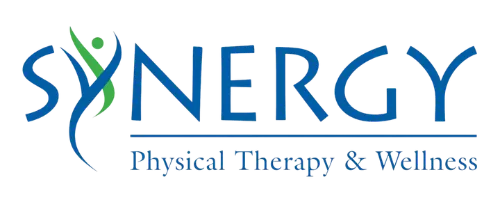
Concussions are just one of the MOST COMMON, yet most misunderstood injuries that occur throughout an individual’s lifetime and can occur from a variety of causes – not just sports related injuries. Concussions are very difficult to determine because of vast symptoms. Clinical diagnosis of a concussion is the only accurate technique available. Due to the varying symptoms and presentations, there is no true definition of what is considered a concussion. The two closest definitions, according to (Dr. Warren Flautt DPT, 2023), of a concussion include:
- “A change in brain function following a force to the head, which may be accompanied by temporary loss of consciousness, but is identified in awake individuals with measures of neurologic and cognitive dysfunction.”
- “Sport-related concussion is a traumatic brain injury caused by a direct blow to the head, neck or body resulting in an impulsive force being transmitted to the brain that occurs in sports and exercise-related activities. This initiates a neurotransmitter and metabolic cascade, with possible axonal injury, blood flow change and inflammation affecting the brain. Symptoms and signs may present immediately, or evolve over minutes or hours, and commonly resolve within days, but may be prolonged.”
Concussions symptoms can range as previously mentioned. Those symptoms could include the following according to (Dr. Warren Flautt DPT, 2023):
- Reduced focus, attention, and lapse of memory
- Neck Pain
- Headaches
- Changes in vision and cognition
- Dizziness and reduced balance
- Disruption in sleep
- Large levels of fatigue
- Disinterest in normal activities that you may have enjoyed prior to the injury.
- Higher levels of anxiety, agitation, and/or depression
- Increase in general symptoms with higher activity levels
- Light and noise sensitivity
Typically, the first thing people think of when someone has a concussion is to tell them that they need to go lock themselves in a dark room, not do any form of activity, and to not look at any screens. However, the research now reports that all this information is now false and unhelpful with return to their normal lifestyle/sports related activities (Leddy et. al., 2023) (Leddy et al., 2019).
There is very limited research and evidence regarding steps to recovery. In regard to school age children/athletes, the overall effects of mental rest on recovery from concussion, recommendations of prolonged periods of mental rest, and particularly absence from school, should be approached cautiously (Leddy et. al., 2023) (Leddy et al., 2019).
A study performed by McCann et al. (2022) assessed college age athletes and it was noted that those who were not properly treated/rehabilitated, were at an increased risk of a lower extremity injury even up to a year post- concussion. Therefore, it is imperative that individuals look into proper rehabilitation following a concussion to reduce all risks of further injury and improve their overall function.
According to Thomas et al. (2018) it was determined that engaging in physical therapy post-concussion by a certified specialist allows the individual to reduce their symptoms as well as risk of other forms of injury within a median time of 17 days post-concussion rather than the 21 to 28 days without proper rehabilitation.
Given all the new information presented and with every concussion having different symptoms, a physical therapy plan that is individualized and focused to each patient will help with decreasing their symptoms and progressing towards returning to play or work-related activities! Come join us at Synergy Physical Therapy and Wellness for an evaluation and a return back to normal if you are suffering from concussion symptoms.
- Dr. Kass Lotrich, PT, DPT, VCS
Sources:
McCann, R. S., Schussler, E., Martinez, J. C., & Ramirez, V. (2022). The Effect of Concussion History on Lower Extremity Injury Risk in College Athletes: A Systematic Review and Meta-Analysis. The International Journal of Sports Physical Therapy, 17(5). https://doi.org/10.26603/001c.36810
Leddy, J. J., Haider, M. N., Ellis, M. J., Mannix, R., Darling, S. R., Freitas, M. S., Suffoletto, H., Leiter, J., Cordingley, D. M., & Willer, B. (2019). Early subthreshold aerobic exercise for Sport-Related concussion. JAMA Pediatrics, 173(4), 319. https://doi.org/10.1001/jamapediatrics.2018.4397
Leddy, J. J., Burma, J. S., Toomey, C., Hayden, A., Davis, G. A., Babl, F. E., Gagnon, I., Giza, C. C., Kurowski, B. G., Silverberg, N. D., Willer, B., Ronksley, P. E., & Schneider, K. (2023). Rest and exercise early after sport-related concussion: a systematic review and meta-analysis. British Journal of Sports Medicine, 57(12), 762–770. https://doi.org/10.1136/bjsports-2022-106676
Thomas, D., Coxe, K., Li, H., Pommering, T. L., Young, J., Smith, G. A., & Yang, J. (2018). Length of recovery from Sports-Related concussions in pediatric patients treated at concussion clinics. Clinical Journal of Sport Medicine, 28(1), 56–63. https://doi.org/10.1097/jsm.0000000000000413
Flautt, Warren, DPT, S. F. (2023). VCS-1: Diagnosis & Management of Concussions in the Athlete: An Evidenced-based approach Part 1 of the Vestibular Concussion Specilaist Certification., (pp. 1-112). Denver.

